by Lauren Capp: Stress and trauma can be revealed in the body as tense shoulders,..

upset stomach and most commonly tight hips. The hips are the body’s waste receptacle that house years of stored emotions and tension. It can be grueling to practice hip openers as they release those stored emotions built up over time. Constructing a safely executed hip opening sequence will loosen tight hips from years of inactivity and stress.
Prior to beginning a practice, recognize the body’s capabilities and limitations. Here are a few things to keep in mind…
- Flexibility vs. strength – Too much mobility can cause injury to the joints, ligaments, and tendons when going passed full range of motion. The ligaments (fibrous connective tissue) that connect bone-to-bone will slowly break down. With no ligaments connecting the bones together, bone on bone rubbing will occur. Not good. Flexibility is healthy but one must balance that flexibility with strength.
- Directions of movement – The hip joint is a ball and socket that allows for many directions of movement (DOM’s). Inactivity or misuse of the body can limit this type of movement. A few examples are external rotation (tree pose), internal rotation (eagle pose), flexion (front leg in high lunge), extension (back leg in high lunge), adduction (feet together in tadasana), and abduction (wide leg forward fold).
- Use props – Support the body with blocks and blankets in postures that require a huge opening in the hips, especially when gravity is a factor. This will help to avoid sinking into the joints and keeps surrounding muscles strong.
Ready to get started? Here are 10 yoga poses for tight hips!
Pyramid Pose (Parsvottanasana)
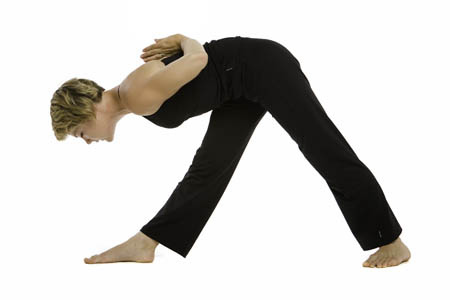
Muscles such as piriformis, gluteus medius, the lateral side of the front leg TFL (tensor fascia lata) and (IT Band-Iliotibial Band) will love this posture. Inflamed or tight muscles can cause other muscles in surrounding areas to feel irritated. This stretch is not only pleasant for the hips and hamstrings; it also stretches the muscles of the lower back.
Revolved Triangle Pose (Parivrtta Trikonasana)
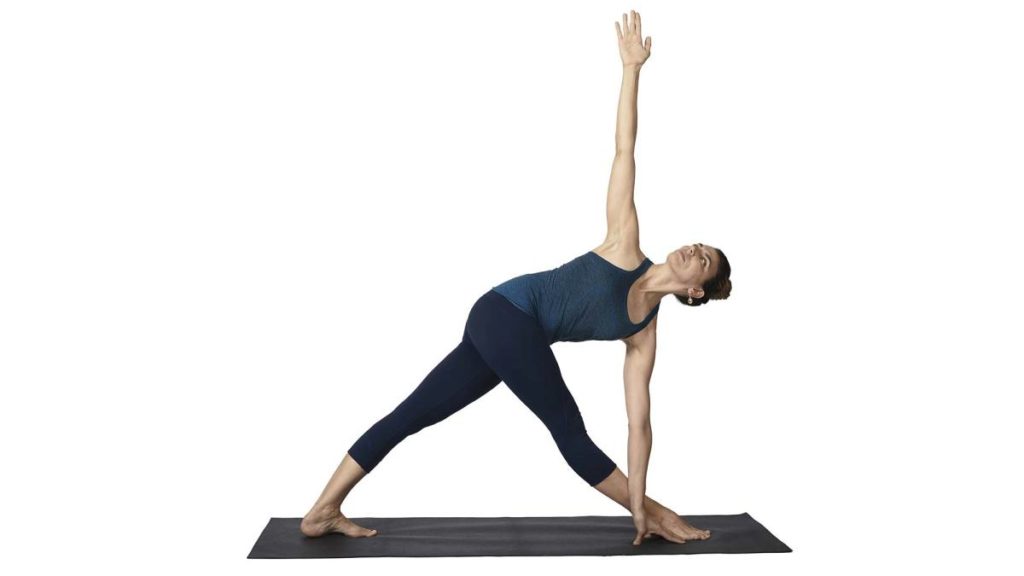
Along the same lines as pyramid pose, this twisted triangle pose will stretch the lower back, hip muscles and assist in a healthy rotation of the thoracic spine. The calf of the back leg (gastrocnemius) will release when pressing the heel down to the floor. The hamstrings of the front leg and lateral hip muscles will elongate. Sometimes lower back pain and tension in the IT band comes from a tight TFL pulling the IT band taught. Revolved triangle pose will help with stretching a tight TFL and could ultimately alleviate hip pain.
Bound Angle Pose (Baddha Konasana)

(or on the back with props in Supta Baddha Konasana). Pressing inner thighs or knees to the floor in this posture can cause injury to the groin and knees. The body’s joints are not meant to move passed their full range of motion. Each part of the body is a road map to the next and if one muscle is tight, irritated or inflamed, it can cause a chain reaction to the rest of the body. If supported properly in this hip opener, the groin, hip adductors, and hip flexors will receive a happy release. If the student is very flexible, hover the knees off of the floor instead of resting them completely on the ground.
Low Lunge (Anjaneyasana)
If knees are sensitive, find support of a blanket under the back knee or find high lunge with the back knee lifted. This posture will bring the front hip into flexion and the back hip into extension. Extension of the back leg will free up any tight muscles in the quadriceps and hips from a long day of sitting.
Eagle Pose (Garudasana)
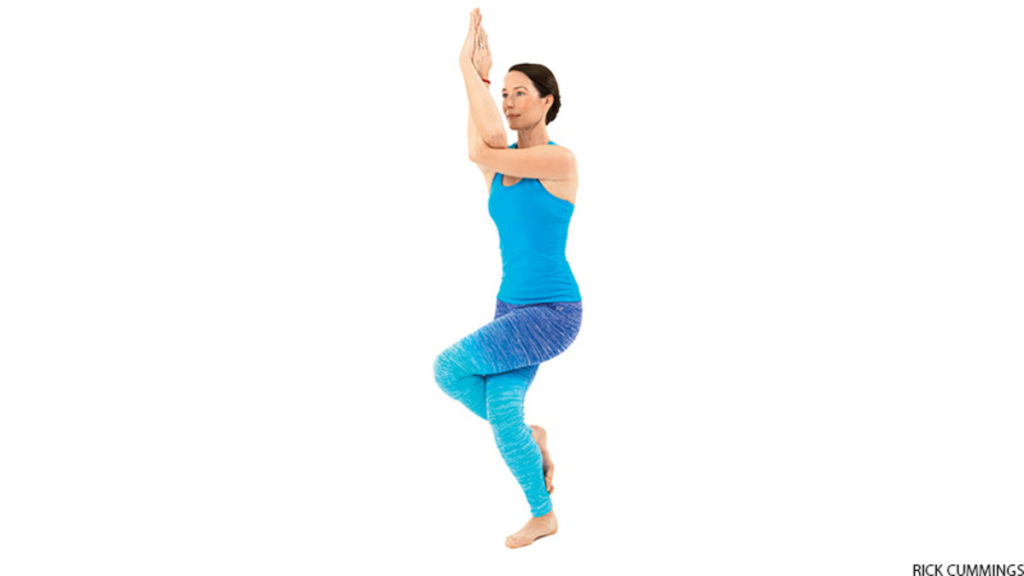
This posture draws the hips into adduction and strengthens the hip adductors when doing so. The hips and quadriceps will feel a stretch if the spine is upright. Aligning the knees to the center of the body will stretch the TFL, gluteus medius/minimus/maximus that are wrapping over the standing leg. Those same muscles on the standing leg will strengthen as well.
Seated Spinal Twist (Ardha Matsyendrasana)
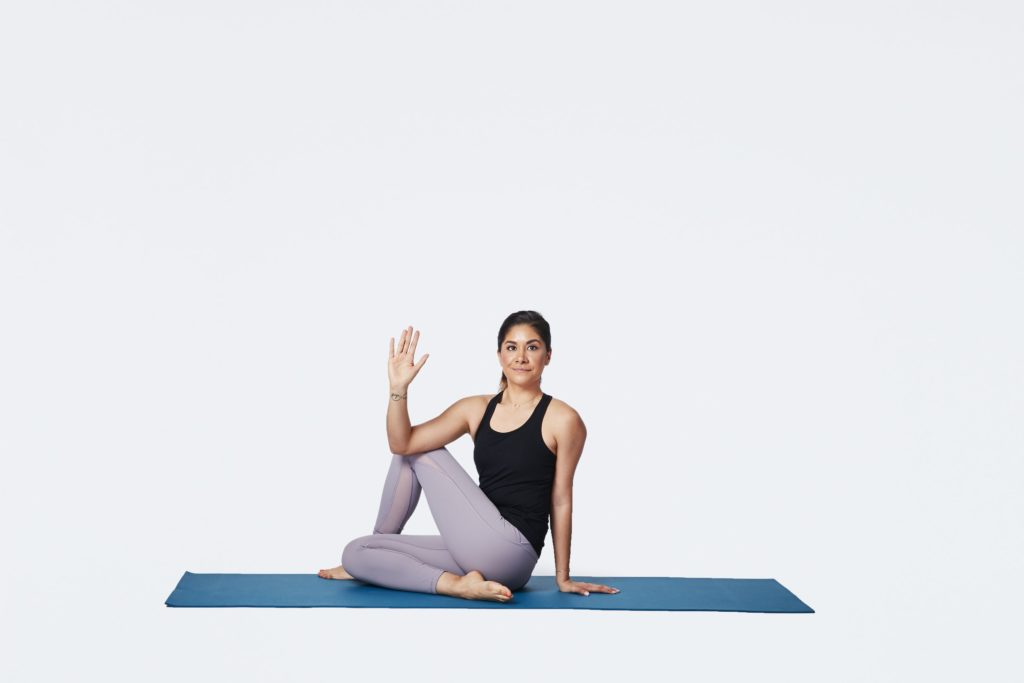
Stretching the rotators of the hips, seated spinal twist helps with lower back pain and releases the lateral sides of the hips and thigh. Maintaining a tall spine is beneficial here to strengthen the spine and massage abdominal organs.
Supine Twist (Supta Matsyendrasana)
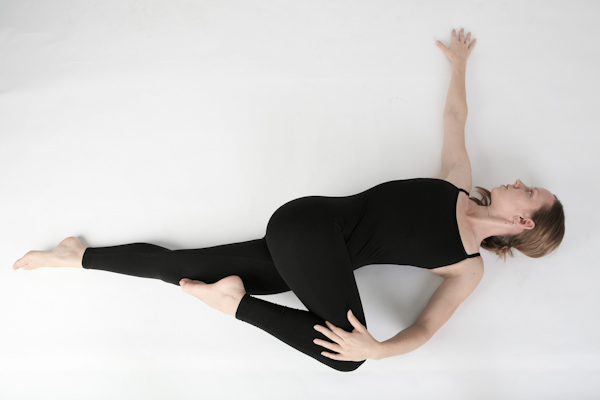
One of the healthiest poses for the hips is a supine twist. This twist alleviates back pain especially in the L4 L5 lumbar spine area. Lying down and twisting is a lovely combination. It is more important for the shoulders to stay to the floor than for the top knee to touch the floor. This allows the twist to originate in the thoracic spine instead of the lower lumbar.
Squat (Malasana)
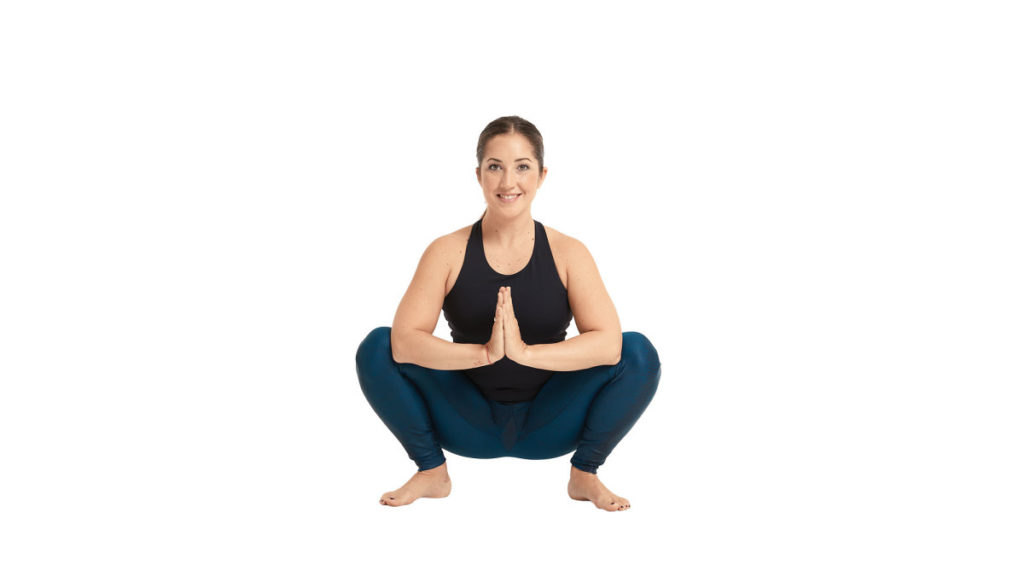
Squatting is one of the more challenging hip openers, especially for beginning practitioners. If supported properly, this posture can benefit the student tremendously. The spine should be maintained in a tall position as if shoulders were aligned directly over hips. It is common to find the center of the chest caving forward due to an internal rotation and rounding of the shoulders. Maintaining an upright position will strengthen the spine while opening tight hips. Hovering the hips off of the edge of range will strengthen the quadriceps and muscles surrounding the hips. The use of a block(s) under the seat is helpful in taking the weight of the body out of the joints. Props are beneficial for beginners, extremely flexible yogis, and all practitioners alike.
Tree Pose (Vriksasana)

Image source: wikimedia.org
Tree pose is very powerful for the mind and body. Holding this posture with focus is the challenge. Placing the foot to the opposite ankle gives a slight external rotation of the hip. Once the hips are open and balance is maintained, placing the foot to the inner thigh (never the knee) will increase flexibility. Find equal distribution of weight in both sides of the body as to avoid putting all of the weight on the standing hip and leg.
Child’s Pose (Balasana)
A very grounding and calming posture, child’s pose elongates the spine and releases the hips. Student’s can benefit from a closed knee child’s pose or a wide knee child’s pose. If a student is hypermobile in the hips, practicing with wide knees may cause injury. Support the joints by steering clear of a fully passive child’s pose. Keep the hips lifted off of the fullest range for flexible practitioners. Placing a blanket or block underneath the seat here is helpful for hypermobile or very tight practitioners.
Wintertime is creeping up and with cold weather comes less activity. Keep these yoga poses in mind during the next few months and enjoy happy healthy hippies! Namaste!









































